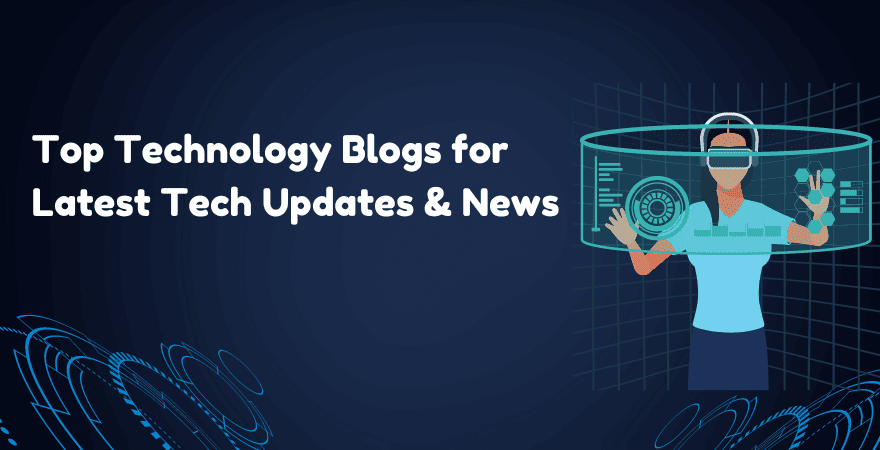Leading Factors to Follow the Best tech blog for Tech News and Tutorials
Leading Factors to Follow the Best tech blog for Tech News and Tutorials
Blog Article
Understanding the Increase of Edge Computing in Today's Digital Globe
In the rapidly advancing landscape of modern technology, side computing arises as a critical force, reshaping just how information is processed and used. By transitioning data management closer to the resource, side computer addresses essential latency concerns while enhancing bandwidth use and boosting protection measures.
What Is Side Computer
Edge computing, although a reasonably current innovation in the realm of technology, basically changes how information is refined and handled by bringing calculation and information storage space closer to the location where it is needed. Unlike conventional cloud computer designs, which often rely upon centralized data facilities that can be geographically remote, side computing decentralizes information handling. This closeness decreases latency, improves real-time data handling, and boosts the overall customer experience by ensuring faster reaction times.
At its core, side computer entails a network of localized tools and facilities, such as gateways, routers, and sensing units, with the ability of processing information at or near the source. This local handling capability is particularly essential for applications requiring instant data evaluation, such as self-governing vehicles, commercial automation, and smart cities. Furthermore, by offloading information processing jobs from main web servers, side computer decreases bandwidth needs and boosts information privacy and security, as sensitive details can remain on-site instead of going across extensive networks.

Key Motorists of Adoption
Numerous elements are driving the fostering of side computer in today's electronic landscape. Edge computing addresses this requirement by enabling information processing closer to the data source, reducing latency and boosting real-time decision-making abilities.
An additional significant chauffeur is the need for boosted bandwidth efficiency. Central cloud systems can come to be overwhelmed with the large volume of data generated by IoT gadgets, causing bottlenecks (Best tech blog). By processing data at the edge, organizations can alleviate network blockage and improve total system efficiency
Additionally, safety and personal privacy issues are pushing companies towards edge computing. By refining delicate information in your area, firms can reduce dangers connected with information transmission and direct exposure to prospective cyber risks.
The rise of applications needing real-time handling, such as independent automobiles and augmented truth, additionally necessitates the quick feedback times that edge computing provides. Jointly, these chauffeurs are making edge calculating an indispensable part of modern IT framework, leading the means for its widespread adoption across various sectors.
Advantages Over Cloud Computing
Just how does edge computing identify itself from standard cloud computer? Mainly, side computing brings information processing closer to the source of information generation, typically on regional devices or neighboring servers, instead than depending on central information.
In addition, edge computer boosts transmission capacity efficiency (Best tech blog). By processing data locally, just the essential data is sent to the cloud for further evaluation or storage space, lowering the quantity of information that passes through the network. This not only minimizes network congestion yet likewise reduces information transmission costs
Side computing also supplies enhanced data personal privacy and protection. Delicate information can be refined locally without being sent out to the cloud, lessening the exposure to possible cyber risks. This is specifically helpful for markets managing secret information, such as healthcare and economic services.
Additionally, edge computing makes certain better resilience and integrity. Regional processing permits proceeded procedure even when connection to the cloud is endangered, keeping necessary functions and solutions in spite of prospective network disruptions. These benefits jointly demonstrate edge computer's transformative potential in enhancing performance and security in electronic environments.
Challenges and Considerations
While side computer supplies many advantages, it likewise presents special challenges and considerations that need to be resolved to completely recognize its capacity. Furthermore, managing and checking a decentralized network of edge tools can be intricate, calling for innovative tools and methods to make sure smooth operation and maintenance. Best tech blog.
One more factor to consider is the scalability of side computing services. As the number of connected gadgets grows, so does the demand for processing power at the edge, which can lead to source restraints. Organizations needs to thoroughly plan their framework to fit this growth without endangering performance or efficiency.
Interoperability is an additional crucial aspect. With different software and hardware parts entailed, making sure compatibility and seamless integration can be tough. Standardization initiatives are necessary to assist in communication in between disparate systems.
Future Trends in Side Computer
Anticipating the future, side computing is poised to change various markets by enabling quicker information handling and reducing latency. As the quantity of information created by IoT devices proceeds to grow, side computer will certainly come to be significantly vital in managing this increase effectively.
One more arising fad is the development of edge-native applications designed particularly to utilize the unique capabilities of edge computing. These applications will maximize efficiency and source utilization, causing boosted performance throughout various industries. Developments in 5G modern technology will certainly better bolster edge computer by giving the essential infrastructure for high-speed, low-latency communication between devices and side nodes.
Verdict
Side computer's increase is driven by the expansion Full Article of IoT devices useful site and the need for real-time data handling, which boosts effectiveness by reducing latency and decentralizing information management. This approach minimizes transmission capacity inefficiencies and safety problems, helping with developments in applications like self-governing automobiles and wise cities. Regardless of challenges such as framework intricacy and combination, the future of edge computing guarantees a more receptive digital ecological community, with proceeded developments shaping its development and expanding its applicability across sectors.
Edge computer, although a relatively current advancement in the world of innovation, basically changes exactly how data is processed and managed by bringing computation and information storage space closer to the location where it is needed. Unlike typical cloud computing models, which often depend on centralized data facilities that can be geographically distant, edge computer decentralizes data handling. Additionally, by unloading data handling jobs from main web servers, edge computer browse around here lowers transmission capacity requirements and improves information personal privacy and security, as delicate details can remain on-site rather than traversing extensive networks.

Report this page